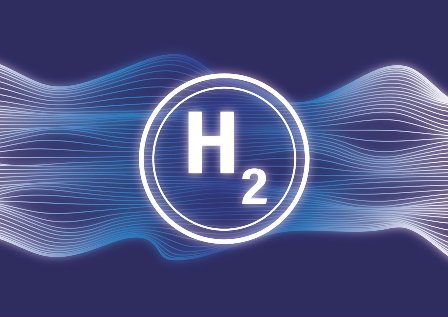
Constellation Sets Industry Record for Blending Hydrogen With Natural Gas to Further Reduce Emissions
Test confirms hydrogen’s potential to meet nation’s climate goals by reducing carbon emissions from existing natural gas-fired power plants
BALTIMORE–(BUSINESS WIRE)–Constellation, the nation’s largest producer of carbon-free energy, has set an industry record for blending high concentrations of hydrogen with natural gas, further proof that hydrogen can be an effective tool to lower greenhouse gas emissions.
Working with Siemens Energy and EPRI, the hydrogen blending test was conducted at Constellation’s Hillabee Generating Station, a 753-megawatt combined-cycle natural gas plant in central Alabama that began operating in 2010. The test showed that with only minor modifications, an existing natural gas plant of that age can safely operate on a blend of 38 percent hydrogen, nearly doubling the previous blending record for similar generators. The blending test occurred May 18 at Hillabee on a Siemens Energy SGT6-6000G gas turbine.
The Environmental Protection Agency recently released new guidelines aimed at reducing carbon emissions from the electric sector, citing hydrogen blending as a primary technology to help achieve the nation’s climate goals. The testing results at Hillabee demonstrate that hydrogen produced with clean energy can be an effective tool in meeting the agency’s goal.
“This test proved what we’ve suspected for years — that blending clean hydrogen with natural gas can safely reduce emissions without major modifications to an existing plant that’s well over a decade old,” said Joe Dominguez, president and CEO of Constellation. “As the EPA and numerous climate experts have acknowledged, the availability of affordable clean hydrogen at scale will be essential if we are going to prevent the ravaging effects of climate change.”
A 38 percent blend rate would reduce Hillabee’s carbon emissions by approximately 270,000 metric tons annually, the equivalent of taking more than 60,000 passenger cars off the road, based on EPA data. Experts from Siemens Energy and EPRI collaborated with Constellation on the fuel blending tests.
Nitrogen Oxide (NOx) emissions did not increase during this blending test, confirming there was no negative impact to local air quality.
“Siemens Energy is committed to reducing emissions from electric generation as we grow and diversify our energy mix to meet rising demand reliably, affordably and safely. We set an ambitious target to have all our new gas turbines capable of burning 100% hydrogen by 2030 and this demonstration shows that we are well on our way. Hydrogen is a growing part of the portfolio of technology solutions that we offer our customers,” said Rich Voorberg, President of Siemens Energy for North America.
“This project represents an important step in assessing the technical viability of hydrogen power generation,” said Neva Espinoza, EPRI’s vice president of Energy Supply and Low-Carbon Resources. “The ability to one day deploy hydrogen generation more broadly will rest on continued, collaborative R&D spanning hydrogen production, infrastructure development, and power generation applications.”
Constellation produces nearly 90 percent of its energy from carbon-free sources and has a goal of achieving 100 percent carbon-free electricity generation and a 100% reduction in operational emissions by 2040. The company will use the results from this test to inform its plans for transitioning its natural gas facilities to carbon-free technology in the coming years.
About Constellation
Headquartered in Baltimore, Constellation Energy Corporation (Nasdaq: CEG) is the nation’s largest producer of clean, carbon-free energy and a leading supplier of energy products and services to businesses, homes, community aggregations and public sector customers across the continental United States, including three fourths of Fortune 100 companies. With annual output that is nearly 90% carbon-free, our hydro, wind and solar facilities paired with the nation’s largest nuclear fleet have the generating capacity to power the equivalent of 15 million homes, providing around 10% of the nation’s clean energy. We are further accelerating the nation’s transition to a carbon-free future by helping our customers reach their sustainability goals, setting our own ambitious goal of achieving 100% carbon-free generation by 2040, and by investing in promising emerging technologies to eliminate carbon emissions across all sectors of the economy. Follow Constellation on LinkedIn and Twitter.
Contacts
Paul Adams
Constellation Communications
410-470-9700

